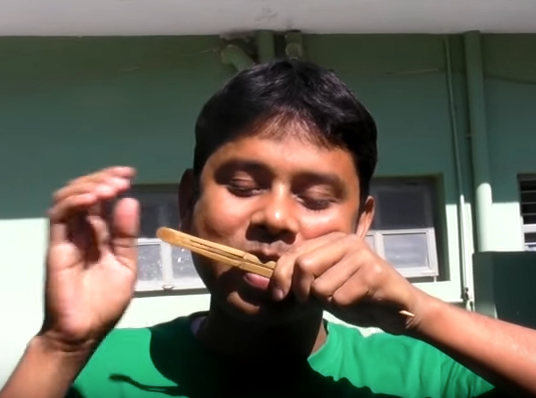
The gogona is a jew’s harp that is found in Assam. It is very much associated with the Bihu festival (spring harvest).
Gogonas are made from a single piece of seasoned bamboo. The central resonating strip is carefully carved in such a way that it does not touch the outer frame. Pitch is determined by several factors. These are: 1) The length of the resonating strip. 2) The width and geometry of the resonating strip. 3) the tinsel quality at the bass of the resonating strip. The pitch may be raised by reducing the mass of the strip at the free end, this generally means making the free end thinner. The pitch may be lowered by reducing the tinsel strength at the base, this basically means making it thinner at the base.
There are two forms of the instrument. There is the short, broad ramdhan gogona, which is played by men. There is also the longer lahori gogona which is used by women. This version is generally incorporated into a hairpin that women use in traditional Bihu dancing.
Playing the gogona is similar to playing other jew’s harps. The instrument is held up to the lips with one hand, while the free end is plucked. Unlike other jew’s harps, the resonating strip is never actually touched, but instead the semi-flexible frame is plucked. Changes in timbre are produced by both the movement of air across the instrument as well as the shape of the mouth.